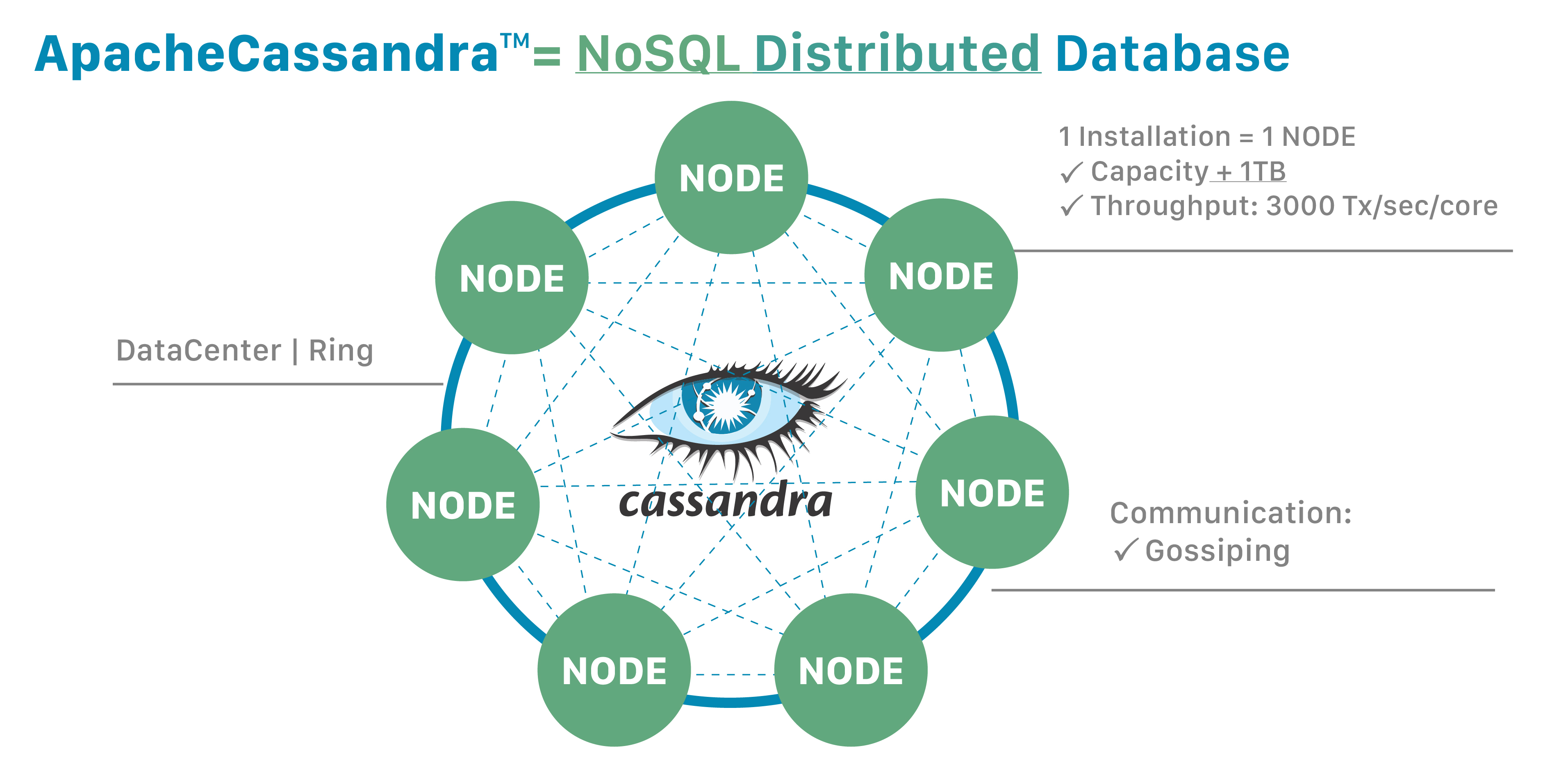Cassandra Davis Age - Exploring A Powerful Name
A lot of folks look up names like Cassandra Davis, perhaps wondering about someone's life story or what they've been up to. It's a common thing, really, to be curious about people who share a name, maybe even a well-known one. This kind of curiosity often leads us down paths of discovery, seeking out details that paint a picture of an individual. You know, just trying to piece together who someone is.
Yet, it's pretty interesting how a name can sometimes point to more than just a person. Sometimes, that very same name, like Cassandra, brings up something completely different, something with its own story and a lot of importance in a whole other area. It's almost like a word can have a dual existence, one for people and another for something else entirely, a concept that's quite fascinating when you think about it.
So, while you might be thinking about a person when you hear "Cassandra Davis age," there's also a big, really important piece of technology that goes by "Cassandra." This powerful tool, a database actually, has its own kind of "age" and a fascinating history of growth and development, quite separate from any individual. It's truly a testament to how names can be shared across very different domains.
- Tristen Snell Twitter
- Teamspeak Twitter
- Bbl Community Twitter
- Cheapassgamer Twitter
- Chimocurves Onlyfans Leak
Table of Contents
- What is Apache Cassandra Anyway?
- How Did Cassandra Get Started?
- Why Do People Trust Cassandra?
- What About Cassandra Davis Age - The Database's Maturity?
- Getting Going with Cassandra
- Learning the Main Ideas of Cassandra
- How Does Cassandra Handle Information?
- Seeing Cassandra in Action - Stories from Users
What is Apache Cassandra Anyway?
When folks talk about Apache Cassandra, they're typically referring to a really strong piece of software. It's an open-source kind of database, which means its design is openly available for anyone to look at and help make better. This particular database is also what we call "NoSQL," which just means it handles information in a way that's a bit different from the older, more traditional database systems. It's quite a departure from what some people might be used to, and that's actually a good thing for many situations. Basically, it’s built for a specific kind of work.
One of the big reasons why thousands of businesses place their confidence in Cassandra is for its ability to grow and its constant availability. You see, it's built to spread out across many computer servers, so if one part has a problem, the whole system keeps running smoothly. This kind of setup means it can handle a truly massive amount of information and user requests without slowing down. So, it's pretty reliable, which is a big deal for companies that need their systems up all the time, like your favorite online store or social media platform, for instance.
It's also known for not giving up on its speed. Even when it's dealing with huge piles of information and lots of activity, it keeps things moving along quickly. This is because of how it organizes and retrieves information, which is a bit clever. It uses what's called a "partitioned wide column storage model," which, in simpler terms, just means it's really good at sorting and finding data across different spots. This design really helps it maintain its quick response times, even under pressure. It's quite a marvel, actually, how it keeps up.
- Corey Hudson Twitter
- Jhonny Faria Gay
- Gay Sex Scenes Twitter
- %C3%A5%C3%A6%C3%A5 %C3%A9%C3%A4%C2%BA%C2%BA
- Thtbihjas Twitter
How Did Cassandra Get Started?
The story of Apache Cassandra actually begins at Facebook, the social media giant. It was first developed there to power their Inbox search feature, which, you know, needed to be incredibly fast and always available for millions of people. After its initial creation, Facebook decided to make it open source, giving it to the Apache Software Foundation. This was a pretty big moment, as it allowed a much wider community of developers to get involved and help it grow. So, it really got its start in a place that understood the need for massive scale.
From that point, Cassandra began its journey of evolution, with many bright minds contributing to its design and capabilities. It's been through various stages of development, with new versions being released regularly, each one bringing improvements and new features. For example, the latest version, 4.1, represents a significant step in its ongoing refinement. These version numbers are, in a way, like milestones marking the database's "age" and its progress over time. It's a continuous process of getting better and more capable, which is quite impressive.
The community around Cassandra is really active, constantly working on making it more robust and efficient. This collaborative spirit is a huge part of why it's become such a respected tool in the technology world. It's not just one company's project anymore; it's a shared effort, and that's what helps it stay relevant and powerful. You could say, it's a testament to what a collective can build, truly.
Why Do People Trust Cassandra?
People put a lot of faith in Cassandra for a few core reasons, and they're pretty important ones for any system that needs to handle a lot of activity. First off, there's its ability to scale horizontally. What this means is that when you need more power or storage, you don't have to get a bigger, more expensive single machine. Instead, you just add more ordinary servers to the system, and Cassandra automatically spreads the work out. This makes it really cost-effective to grow, and it's a lot more flexible, too. It's a bit like adding more lanes to a highway as traffic increases, rather than trying to make the existing lanes wider.
Then there's the high availability aspect, which is a truly significant benefit. This refers to its capacity to stay up and running even if parts of the system go offline. Because information is copied and stored across multiple servers, if one server fails, another one can step in immediately without anyone noticing a disruption. This kind of resilience is absolutely vital for services that can't afford any downtime, like online banking or critical healthcare applications. It means your data is always there, ready when you need it, which is, you know, a huge comfort.
And let's not forget performance. Cassandra is built from the ground up to be quick, especially when dealing with a lot of incoming data or when you need to retrieve specific pieces of information really fast. It's designed to keep response times low, even as the amount of data grows into the petabytes and beyond. This speed, combined with its ability to handle big loads, makes it a top pick for applications that require quick interactions and constant data flow. It's really quite impressive how it keeps up, honestly.
What About Cassandra Davis Age - The Database's Maturity?
When you come across a search term like "Cassandra Davis age," it's completely natural to think about a person and their years on this planet. However, in the context of technology, the name Cassandra points to something quite different, something that has its own kind of "age" – its maturity and how long it's been developing. The Apache Cassandra database, in a way, has "aged" gracefully, much like a fine wine, becoming more refined and capable over time. It's had many years of growth and refinement, which is pretty neat.
Its "age" is measured not in human years, but in its versions and the length of time it has been actively developed and used by a worldwide community. For instance, knowing that Cassandra has reached versions like 4.1 tells us a lot about its stability and how many cycles of improvements it has gone through. Each new version is a mark of its continued evolution, showing how it has adapted to new challenges and user needs. So, its "age" really speaks to its reliability and how much it has been put to the test, you know, in the real world.
This long period of development and real-world application means that Cassandra has been rigorously tested and improved by countless users and developers. It's not a new, untested tool; it's a system with a proven track record, having handled massive amounts of information for some of the biggest companies out there. So, while you might be looking for a person's age, you're finding a technology that has truly matured and proven its worth over a significant period. It's actually quite a journey it's been on.
Getting Going with Cassandra
If you're new to Apache Cassandra and want to get it up and running quickly, there are some pretty straightforward steps to follow. The first thing to do is to add the Apache repository for Cassandra to your system's list of software sources. This is typically done by adding a line like `deb [signed-by=/usr/share/keyrings/apache-cassandra.gpg] https://debian.cassandra.apache.org 41x main` to a file such as `/etc/apt/sources.list.d/cassandra.sources.list`. This tells your computer where to find the official Cassandra software packages. It's a little technical, but it's the first step to getting it installed, you know, properly.
Once you've set up the software source, installing Cassandra is usually just a matter of running a few commands in your terminal. This process is designed to be as simple as possible, allowing you to get a basic Cassandra setup working without too much fuss. The goal is to let new users jump in and start experimenting with the database right away. So, it's pretty much a quick way to begin your exploration, which is great for learning.
The community and the official documentation provide really helpful guides for this initial setup. They walk you through each step, making sure you can get started with Cassandra fast. It’s important to read through these guides carefully to make sure everything is configured correctly for your specific needs. You know, just to avoid any little hiccups down the line.
Learning the Main Ideas of Cassandra
Before you really start using Cassandra, it's a good idea to get a handle on its main concepts. These are the foundational ideas that explain how Cassandra works at a higher level. For instance, you'll want to understand what a "node" is, how "clusters" are formed, and what "replication factor" means. These terms are pretty fundamental to grasping how Cassandra stores and manages your information across multiple machines. It’s like learning the basic rules of a game before you start playing, which makes a lot of sense.
There are dedicated resources, often called "Cassandra basics," that are specifically designed to introduce these core ideas. Reading through these materials will give you a solid mental picture of Cassandra's architecture and its operational principles. They help demystify some of the technical jargon and provide a clear path to understanding. So, it’s a really helpful starting point for anyone new to the system, you know, to get their bearings.
If you want to go deeper and understand Cassandra in much more detail, the official documentation is the place to go. It offers comprehensive explanations of every feature and aspect of the database, from its data model to its internal workings. The docs are a truly valuable resource for anyone looking to truly master Cassandra. They are quite thorough, and you can really get into the nitty-gritty there, if you like.
How Does Cassandra Handle Information?
Cassandra uses a specific way to organize information, which is a big part of why it's so powerful. It presents what's known as a "partitioned wide column storage model." In simple terms, imagine your information is sorted into big tables, much like a spreadsheet. But instead of strict rows and columns like traditional databases, Cassandra allows for a lot more flexibility in how columns are added and grouped within a "row." Each "row" can have a different set of columns, which is pretty flexible, actually.
The "partitioned" part means that your information is spread out across different parts of your system, or "partitions." This helps with distributing the workload and making sure that queries can be answered quickly, even with huge amounts of data. It’s a bit like having different sections in a library, where each section holds a specific type of book, making it easier to find what you're looking for. This design is what gives Cassandra its incredible scalability, you know, for handling growth.
Another key concept is its "eventually consistent semantics." This means that when you write information to Cassandra, it might take a very short moment for that information to be completely copied to all the relevant places in the system. However, it will eventually become consistent across all copies. This approach prioritizes being constantly available and fast over always having every single copy of the data updated at the exact same instant. For many modern applications, this slight delay is perfectly acceptable and offers a great trade-off for speed and reliability. It’s a very practical approach, really, for real-world systems.
Seeing Cassandra in Action - Stories from Users
One of the best ways to really grasp the capabilities of Apache Cassandra is to look at how other people and businesses are using it in the real world. There are many "case studies" available that share stories from users in the worldwide community. These stories give you a peek into how different organizations have put Cassandra to work to solve their specific challenges, whether it's handling massive amounts of streaming data or powering highly interactive applications. It's quite insightful, actually, to see it in practice.
These examples often highlight Cassandra's strengths, like its ability to manage huge datasets with high performance, or its resilience in the face of server failures. You'll find out how companies have built systems that can grow almost infinitely, ensuring their services are always available to their customers. Browsing through these real-world applications can be incredibly inspiring and helps you understand the practical benefits of Cassandra's design. It truly shows what's possible with this kind of technology, you know, in a tangible way.
The community is a truly important part of Cassandra's ecosystem. People share their experiences, offer advice, and contribute to its ongoing development. This collaborative environment means that there's a wealth of shared knowledge and support for anyone looking to use Cassandra. So, when you look at these case studies, you're not just seeing how the software works; you're also seeing the collective effort of a global group of users making it better every day. It's a really vibrant community, in some respects.
This article has explored the various meanings associated with the name "Cassandra," particularly focusing on the powerful Apache Cassandra database. We've gone over what makes this open-source, NoSQL database so trusted, including its impressive scalability and constant availability without giving up on performance. We also touched upon its history, how it got started, and how its "age" is really about its versions and ongoing development. For those just getting going, we talked about how to install it quickly and learn its main ideas. Finally, we looked at how Cassandra handles information with its unique storage model and how real-world users are putting it to work. It's a truly significant piece of technology, and its story is quite compelling.
- Proud Elephant Twitter
- Gay Cruising Sex Twitter
- Alex Coal Twitter
- Cookinwitkya Onlyfans
- Argentina Casting Lourdes

Cassandra: Greek Goddess Who Foretold Cursed Prophecies - Ancient Pages

Apache Cassandra | Apache Cassandra Documentation

Cassandra by Evelyn De Morgan | Obelisk Art History